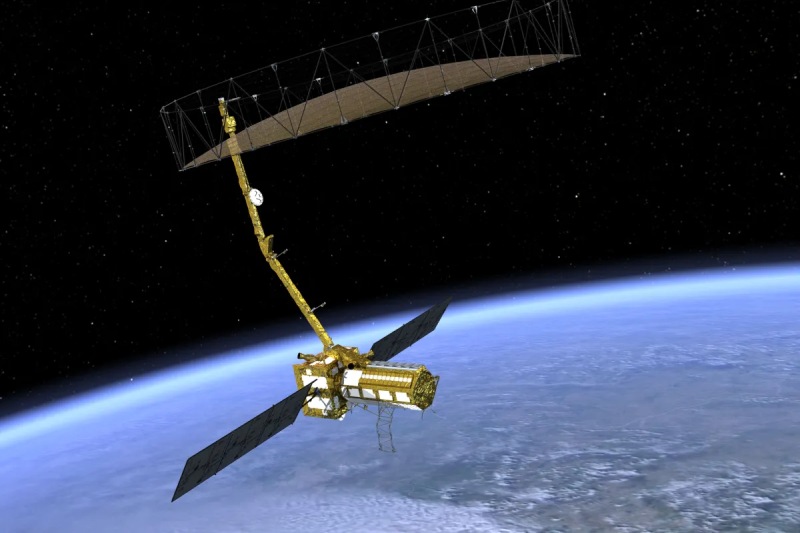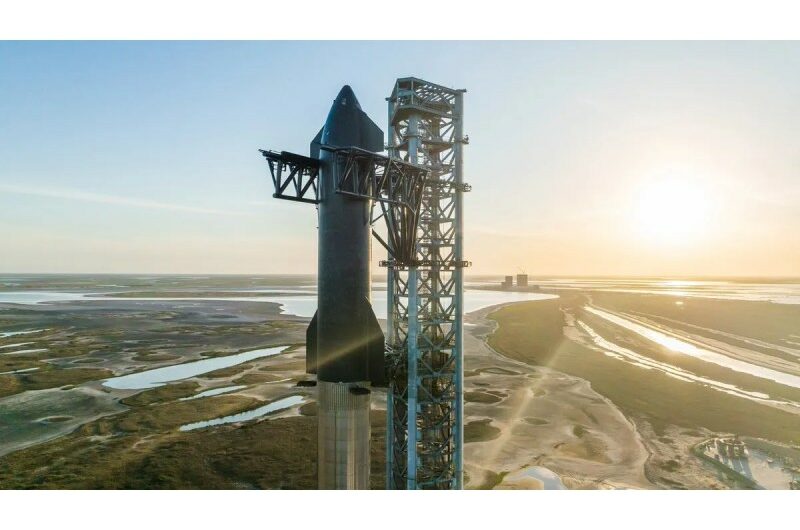The launch of a joint U.S.-Indian radar spacecraft is expected to be postponed until the second half of the year due to modifications made to a big deployable antenna.
A revised launch date for the NASA-ISRO Synthetic Aperture Radar (NISAR) mission is scheduled for the end of April, according to a NASA statement dated March 22. This is due to work being done to shield the spacecraft’s reflector, an antenna measuring 12 meters in diameter when fully extended, from temperatures when it is in its stowed configuration.
“Testing and analysis identified a potential for the reflector to experience higher-than-previously-anticipated temperatures in its stowed configuration in flight,” NASA said in the statement. To prevent those increased temperatures, a “special coating” will be applied to the antenna so that it reflects more sunlight.
According to NASA, this effort entails moving the antenna—which is presently in India with the other NISAR spacecraft—to a facility in California so that the coating can be applied. The time required to apply the coating, send the antenna to California, and then return it to India was not specified by NASA.
Prior to this, NASA representatives had said they anticipated NISAR to launch in the spring. Project managers estimated that the mission will launch by the end of March during a town hall discussion about it at the American Geophysical Union’s Fall Meeting in December.
The chairman of the Indian space agency, ISRO, S. Somanath, stated in a recent interview that NISAR’s launch would be postponed from the first quarter of the year. He did not provide many details about the reason for the delay, other than the fact that it has nothing to do with the rocket that will launch it, the Geosynchronous Satellite Launch Vehicle (GSLV) Mark 2.
“NISAR is still undergoing testing. It looks like the satellite may be delayed,” he said. Asked when the launch would take place, he said the “second half” of the year.
With NASA alone investing more than $1 billion in the mission’s conception and construction, NISAR is the first Earth science spacecraft collaboration between NASA and ISRO and one of the largest agency partnerships overall. While ISRO provides the S-band payload, spacecraft bus, and launch vehicle, NASA provides the L-band radar and engineering payload.
Advanced radar imaging capabilities will be provided by the NISAR radars to meet a variety of Earth scientific requirements, such as monitoring volcanic activity and glacier flow rates. Every twelve days, the spacecraft will be able to map the whole planet.
Although the mission is currently essential to NASA’s execution of the most recent Earth science decadal survey in 2018, development of what would become NISAR began in response to recommendations from an Earth science decadal survey in 2007. The report suggested five “designated observables” to be pursued with different missions, one of which would be surface deformation and change (SDC) with a radar imaging payload.
NASA had planned to postpone the construction of SDC in order to take into account the lessons acquired from NISAR. NASA had been researching concepts for SDC as part of its overarching Earth System Observatory, a suite of missions to implement those defined observables. As part of the Earth System Observatory reorganization, NASA will no longer be developing an SDC mission; instead, it will use data from NISAR to meet that defined observable. This announcement was made as part of the fiscal year 2025 budget request, which was made public on March 11.
Karen St. Germain, the head of NASA’s Earth science division, stated of SDC, “We knew if that mission kicked off, it would be towards the end of the decadal period,” in a presentation given on March 20 at the National Academies Committee on Earth Science and Applications in Space.
“Given that we are going to be launching NISAR later this year and we want to learn from NISAR, we terminated that study” for SDC, she said, “with the idea being that, in the next decadal, we would determine if we want to restart an effort along those lines.”
Topics #Antenna Work #Isro #NASA #NISAR










